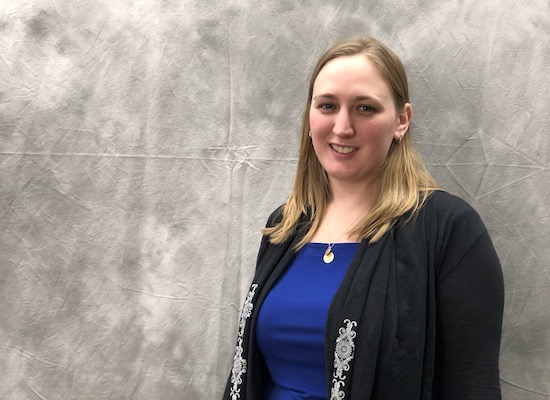The blessings and curse of pharmaceuticals

Jessica Phillips was on her way out the door with her master’s in anesthesia from the Wayne State University School of Medicine, when Sokol Todi, Ph.D., professor of pharmacology and neurology, and Prudentia Worth, Ph.D., the director of the nurse anesthesia program, approached her with a proposition. They had created a program that incorporates several credits from the anesthesia program toward a Ph.D. in pharmacology and asked whether she’d be interested in being the first student.
“Previously, there was only one certified registered nurse anesthetist (CRNA) in the country with a Ph.D. in pharmacology—John Nagelhout, Ph.D., originally from Wayne State as well, who taught pharmacology to over a quarter of the nurse anesthesia programs in the country,” Phillips said. “He was retiring and created a vacuum in the profession that needed to be filled. So, I volunteered to be the pilot student and here I am!”
Currently a student in the Water Lab of Principal Investigator and Director Tracie Baker, Ph.D., an assistant professor (clinical) in the anesthesia program at Wayne State, and a CRNA at Detroit Receiving Hospital, Phillips maintains a busy schedule. But it’s all relevant to her career in anesthesia, a career she knew she wanted ever since her undergrad at the University of Michigan.
 “I used to shadow in the OR and I remember vividly that one of the biggest fears people have is going to sleep for surgery,” she said. “It really makes or breaks their hospital stay, and we can have a positive impact on that.”
“I used to shadow in the OR and I remember vividly that one of the biggest fears people have is going to sleep for surgery,” she said. “It really makes or breaks their hospital stay, and we can have a positive impact on that.”
Anaesthetists help relieve pain during labor, stabilize patients during emergency surgeries and work to reduce post-operative pain, and to do it correctly, must have a healthy understanding of pharmacology and physiology.
“It's amazing to me that we can put someone to sleep, make them feel pain, dissociate from their body, cause amnesia—amazing things that rely on a few ion channels and receptors, but have a huge impact on health and wellness,” she said.
Reducing hazardous waste
But with great power comes great responsibility.
For her doctoral research, Phillips investigates pharmaceuticals in the environment, including their ecological and toxicological impact.
More than 120 chemicals have been found in the Detroit River alone, Phillips said, the majority of them pharmaceuticals. “With the amount of prescriptions in the U.S. increasing half a billion in the last decade to just over 4.2 billion prescribed in 2019 alone, this is a problem that will continue to grow.”
Still, pharmaceuticals have been detected in surface water, groundwater and drinking water worldwide. Emerging research shows environmental exposure to these chemicals may cause hormone disruption and lead to behavioral issues, such as ADHD, fertility issues, disruptions in puberty, and the development of disease, such as diabetes, Phillips said. “Even in anesthesia, one of the volatile anesthetics we use, desflurane, is a contributor to greenhouse emissions, when compared to viable alternatives such as isoflurane and sevoflurane.”
The solution? Exploring alternatives. Being conscious of how the human body metabolizes drugs. Being cognizant of which wastewater treatment plants are better at treating what chemicals. Looking at how we dispose of waste and thinking up ways to do it better, and that includes not flushing medications down the drain and instead safely disposing them at designated disposal sites, Phillips said.
“Pharmaceuticals and plastic and pesticides are never going to go away, but we need to be more responsible about how we handle them and more judicious before we resort to using them for everything.”